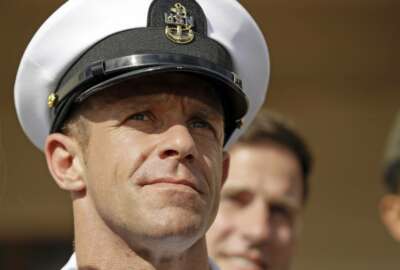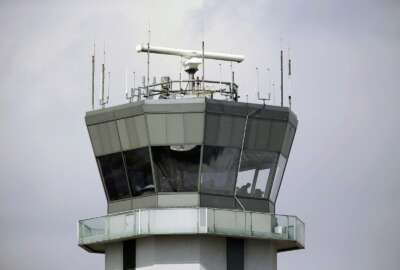
What’s the meaning of a new aircraft carrier?
Launching a new aircraft carrier is more than floating a big ship.
As you dump the remaining, congealed gravy from last week’s feast, consider this: It would have taken 100 million gallons of gravy or chicken soup to float an aircraft carrier. The carrier John F. Kennedy, CVN-79 and presumably having that new carrier smell, floated for the first time in October.
This Saturday, the 1,106-foot craft receives its christening. You can’t break a champagne bottle on an airplane, but you sure can on the leading edge of a carrier. Caroline Kennedy, JFK’s daughter, will do the honors.
The John F. Kennedy follows the Gerald R. Ford as the second in the Ford-class carrier series. At around $12 billion, CVN-79 is neither a cheap ship nor part of a cheap program. Just for scale, consider that the cruise ship Symphony of the Seas cost Royal Caribbean $1.35 billion to build. It’s actually a tad longer than the Kennedy, and serves about the same number of meals every day. It doesn’t derive power from a nuclear reactor, though. Yet thanks in part to the work done by gray warships of free nations, the dainty, unarmed cruise ships may securely ply the littoral waters.
Floating the Ford, Kennedy, and next-on-deck Enterprise will have taken not just seawater but also all of the treasure, technical prowess, and political support the nation can muster. The program has run over cost and schedule, faced technical delays, and overcome a small but persistent channel warning that carriers themselves might be little more than sitting ducks, given the increasing sea capability of China and other nations learning how to do missiles.
On the other hand, the JFK construction was informed by lessons learned on the Ford. Military Times reports, labor costs are down by 16%; a real savings but not quite the contractual target of 18% yet. The learning curve effect operates even in slow-motion, low-volume constructions like aircraft carriers.
Only one company, Huntington Ingalls Industries-Newport News Shipbuilding, has the capability to construct these vessels. The Navy wold never source it to, say, one of the European shipyards that turn out cruise ships and mega-yachts.
Computer design and advanced manufacturing characterizes the construction of naval ships. Yet construction also requires the labor of more than 3,000 people, mostly men, in hard hats wielding welding torches and really big wrenches. It’s a process steeped in tradition and sea mysteries. Steel plate is signed, even if no one will ever see the signature again. Builders hold first-cut-of-steel ceremonies.
Ultimately only a tiny number of great nations have the wherewithal to design, build and sustain these giants. A T1 Supertanker is longer, wider and heavier than an aircraft carrier. But, like the cruise ships, tankers are built for the express purpose of generating revenue for a product in demand. They pay for themselves.
What pays for a carrier that, in 50 years of service, might launch a plane or helicopter only rarely for hostile purposes? What pays for the generation after generation of crews, the perpetual maintenance, the bottomless supplies?
Well, sure, the taxpayers. But more fundamentally, a carrier is an expression of national will, or what portion of a (relatively) free economy we wish to devote to maintaining the United States’ place in the world. I know it sounds corny, but in a messy, inefficient, imperfect, and maddening way, the laying of that keel occurred after consent, and not by the secret diktat of a politburo or central party committee. Unlike those others, we freely publicize the size, capabilities, and costs of carriers, tanks and planes. We openly debate service members’ salaries and benefits; the size of the force; the criminal and social problems that develop in an enterprise employing millions.
When the John F. Kennedy is splashed with bubbly — on Pearl Harbor Day — it won’t set sail and do the nation’s bidding quite yet. A carrier is as much process as a thing. CVN-79 must still undergo final fittings, trials, arguments between contractor and Navy. The transfer of title and real duty at sea aren’t expected until 2022.
The United States might be able to do anything. But it can’t do everything. Somehow, it made a choice to launch a new carrier. Let the nation resolve to deploy this ship and its crews in ways that honor liberty and the ideals we built it to protect.
Copyright © 2025 Federal News Network. All rights reserved. This website is not intended for users located within the European Economic Area.
Tom Temin is host of the Federal Drive and has been providing insight on federal technology and management issues for more than 30 years.
Follow @tteminWFED






